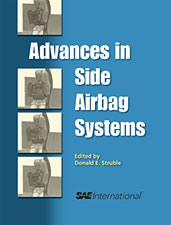Technical Paper
Calculating Vehicle Side Structure Stiffness from Crash Test Data: Effects of Impactor Characteristics
2020-04-14
2020-01-0640
This research examines the effects of impactor characteristics on the calculated structural stiffness parameters A and B for the struck sides of late-model vehicles. This study was made possible by crash testing performed by the National Highway Traffic Safety Administration involving side impacts of the same vehicle line with both a rigid pole and with a moving deformable barrier. Twenty-nine crash test pairs were identified for 2018 model-year vehicles. Of 60 total tests, 49 were analyzed. Test data for 19 vehicles impacted in both modes resulted in A and B values considered to be valid. Classifying these 19 vehicles according to the categories defined by Siddall and Day, only Class 2 multipurpose vehicles were represented by enough vehicles (10) to search for trends within a given vehicle category. For these vehicles, more scatter in the results was observed in both A and B values for the MDB impacts compared to the pole impacts.

